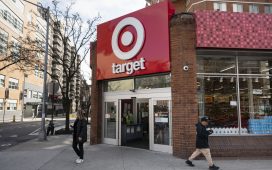Unlock the Editor’s Digest for free
Roula Khalaf, Editor of the FT, selects her favourite stories in this weekly newsletter.
The owner of John Lewis and Waitrose has returned to profit after three years of losses as it scrapped targets to derive almost half of its earnings from outside retail by 2030.
Departing chair Dame Sharon White said the group would focus “unashamedly” on its retail offering by opening more Waitrose shops and refurbishing existing ones, as well as revitalising John Lewis’s products, as it ditched specific targets for its financial services and build-to-rent divisions — a key plank of her earlier vision.
When White joined from media regulator Ofcom in 2020, she pledged to build and rent out 10,000 homes as part of plans to generate 40 per cent of profits from non-retail operations.
On Thursday, she blamed high interest rates and inflation for the decision to remove the targets but insisted both divisions were important for the long-term profitability of the UK’s largest employee-owned business.
“The family of complementary businesses . . . will continue to be really important for the partnership, so this is not an ‘either or’,” she added.
The decision comes after Nish Kankiwala, the partnership’s first chief executive appointed a year ago in a role created by White, “refreshed” the turnaround plan and promised staff in November that they would prioritise retail.
Pre-tax profits at the John Lewis Partnership were £56mn in the year to January, compared with a £234mn loss the previous year. Sales climbed 1 per cent to £12.4bn.
Supermarket chain Waitrose helped drive the improvement as it lifted prices, offsetting a weaker performance from department store John Lewis.
Waitrose’s sales rose 5 per cent to £7.7bn, driven by an average 6.6 per cent increase in prices. Sales at John Lewis were down 4 per cent to £4.8bn. Trading operating profit improved by £170mn to £1bn at Waitrose, while at John Lewis it rose by £13mn to £689mn year on year.
Despite the improved performance, John Lewis said it would not be paying staff a bonus at a time when staff morale has been affected by changes to redundancy pay and speculation about future job losses. The partnership said it would instead increase investment to £542mn this financial year, up from £312mn last year.
White said there were no specific targets for redundancies, adding that as the retailer became simpler and more flexible, “that will mean that there’s less need for some roles over the coming years”.
Nick Bubb, an independent retail analyst, said that both chains “achieved more cost savings than we expected” in the second half of the year. The group has saved £420mn since 2021 against a target of £900mn by January 2026.
Bubb added that “there might have been just enough there to pay a small bonus” but the retailer chose to reinvest in the business and wages.
In December, the company raised additional funding of £260mn through a sale and leaseback of 11 Waitrose shops and a new loan to shore up its balance sheet. Because of its unusual structure, it is unable to raise equity externally.
At half-year results in September, the group warned it would take a further two years to complete a turnaround of the department store chain and supermarket to 2027-28 from 2025-26.
In October, White announced she was stepping down in 2025, unless a successor was found before. On Thursday, she said “it’s been the most extraordinary privilege” chairing the company but did not comment further on the process.










